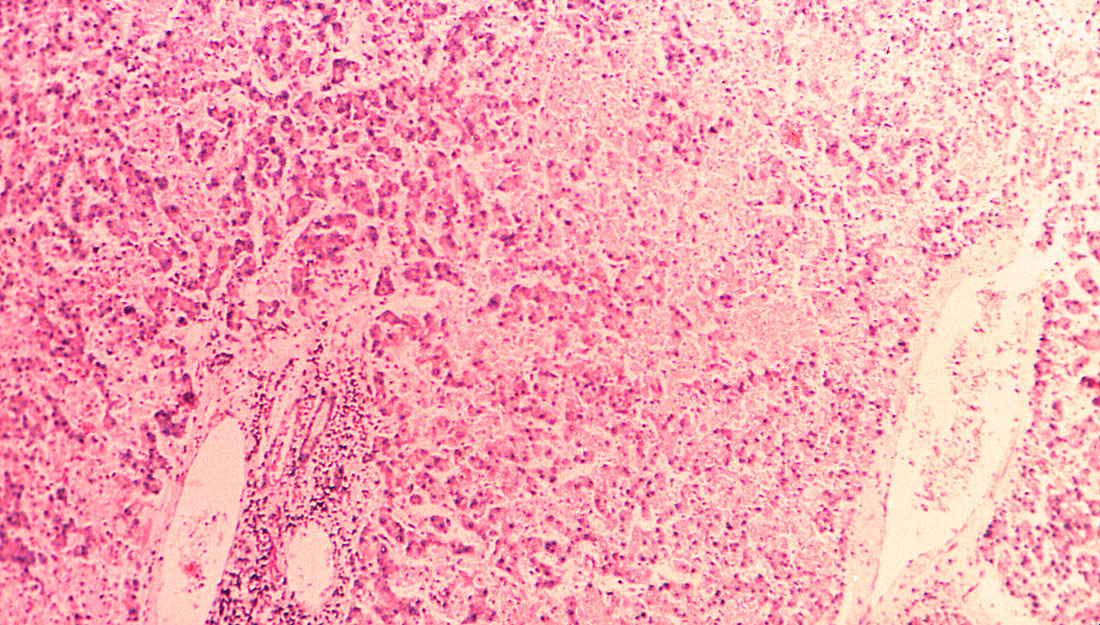- Ann Kellett, PhD
- Health Tips, Healthy Living, Public Health, Show on VR homepage, Trending
A tropical disease expert weighs in on the first Lassa fever death in the United States
Although the virus can be deadly, there is little reason for concern as officials respond

Severe cases of Lassa fever can result in kidney failure, but about 80 percent of patients experience only mild symptoms or no symptoms. (Dr. Yves Robin and Dr. Jean Renaudet, Arbovirus Laboratory at the Pasteur Institute in Dakar, Senegal / World Health Organization)
Lassa fever—a potentially deadly virus that causes hemorrhagic fever similar to Ebola—is in the headlines following the first known death of a person from the virus in the United States, a middle-aged individual in Iowa who had visited West Africa.
Here, Rebecca Fischer, PhD, an internationally known epidemiologist specializing in tropical diseases with the Texas A&M University School of Public Health, explains what’s happening now—and what we need to know moving forward.
What’s going on in Iowa, and should I be worried?
We know from public news reports that the individual was middle-aged, had recently returned to Iowa after visiting West Africa and died on Oct. 28 after receiving care in a hospital.
The Centers for Disease Control (CDC) has stated that the individual was not ill while traveling, so the risk to other passengers is “extremely low.” Government and hospital officials in Iowa have also stated that the risk of transmission is “incredibly low.”
I agree 100 percent with these initial assessments. At this stage, given what is known about how the virus spreads, there is no reason to suspect that the general public is at risk of contracting Lassa.
What do we know about Lassa fever that makes you and other experts so confident that it is not a major threat here?
Lassa fever is much less deadly than other well-known viral hemorrhagic fevers such as Ebola or Marburg disease. While some complications may occur in extreme cases, such as deafness and kidney failure, most individuals experience only minor symptoms.
Exposure usually occurs when a person comes into contact with rats who carry the virus or their droppings, saliva and other secretions, or items contaminated by these secretions. It can also spread from person to person, but only through exposure to an infected person’s bodily fluids such as blood, urine, saliva and semen.
At this time, rodents in the United States are not known to carry Lassa virus. The species of rat primarily associated with Lassa virus is currently found only in West Africa: Nigeria (where the town of Lassa was the virus’s first known location), Sierra Leone, Liberia, Guinea and neighboring countries. Travel-associated infections do appear in the United States, mainly when travelers from that region have had rodent exposures or stay in villages where Lassa is endemic.
As is the case with Ebola, transmission can also occur in certain health care environments, but health care workers and laboratory personnel can minimize their risk of contracting Lassa by complying with standard precautions and with personal protective equipment.
Importantly, Lassa fever is not thought to be contagious until after symptoms begin—which occurs anywhere from two to 21 days after exposure—and it is not spread from one person to another through casual contact such as hugging or shaking hands.
How can I tell if I have Lassa fever?
Lassa fever can be tricky to diagnose because it usually begins with general flu-like symptoms such as weakness, fever, headache and sore throat.
In serious cases, symptoms can include difficulty breathing, vomiting, swelling in the face and pain the chest and back. About 1 in 4 patients also experience deafness, which for most people returns after a few months. Others also experience hair loss and difficulty walking during recovery. Severe cases can result in kidney failure. There is a heightened risk to pregnant women and their unborn children.
On the other hand, about 80 percent of those infected show no symptoms at all or have only mild discomfort.
Anyone concerned that they may have been exposed to the virus should discuss their concerns with their doctor or public health official so that appropriate testing can be conducted.
If I am diagnosed with Lassa fever, what are the treatments?
Treatment for Lassa fever is mostly supportive, but the antiviral drug ribavirin has been used and may be most effective if it is administered soon after symptoms appear. Rest and hydration also can help ease symptoms. Only about 15 to 20 percent of cases are severe enough to require hospitalization.
There has been discussion of a single-dose vaccine against both yellow fever and Lassa fever, but this has been prohibitively expensive so far and faces significant logistical challenges in getting it to people in West Africa.
How can I keep from getting Lassa fever?
The best tip is to avoid contact with Mastomys rodents, which are found only in West Africa. Closer to home, it’s always a good idea to limit rodent exposures and discourage them from entering our homes by storing food in rodent-proof containers and keeping our houses clean. Rodents in the United States are not known to carry Lassa virus but do carry several other diseases.
What’s the bottom line?
The bottom line is that the public health effort to prevent the spread of this virus is progressing just as it should to contain the virus and ensure that risk to the public remains low.
The CDC and officials in Iowa are working to find out how the individual contracted the virus and to identify anyone the individual was in contact with once symptomatic. Anyone who had such contact will be monitored for three weeks, and any new developments will be posted on the CDC website.
Media contact: media@tamu.edu


